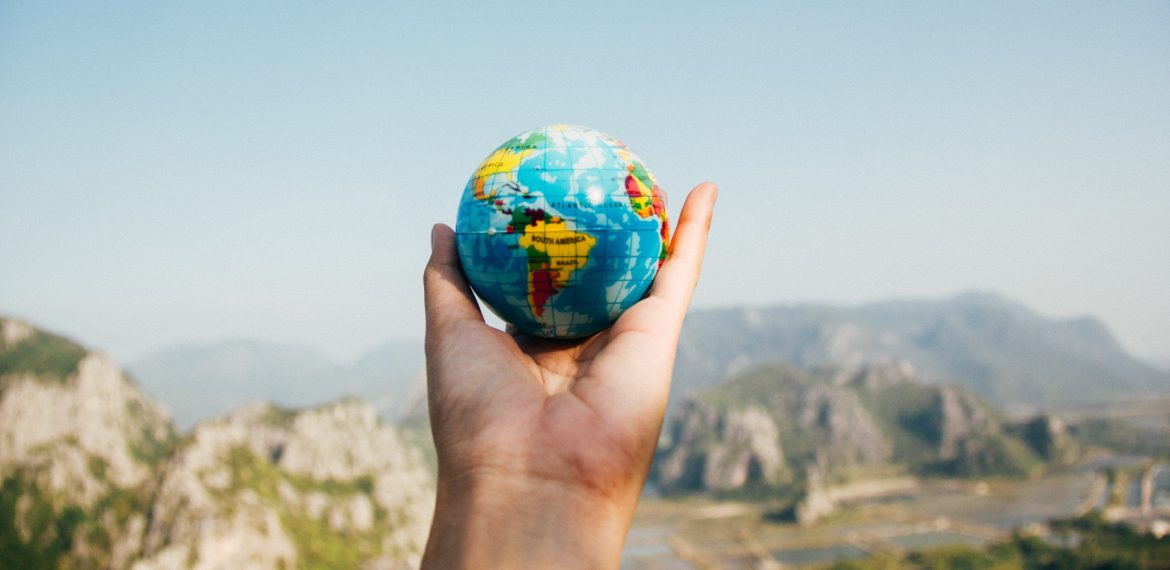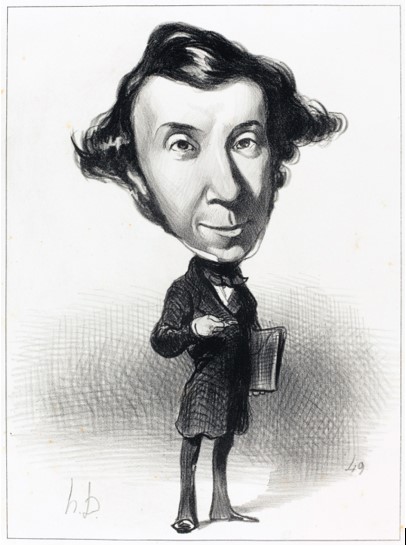Global energy supply and global environment are no longer dissociable. But how can we influence the technological and societal choices that shape energy systems? Who are and what are the actors capable of changing the trajectories in the desirable direction?
All components of natural capital – biodiversity, air, water, soil, climate – are crumbling under human pressures. Under such extreme threats, many might give up. The sixty-four contributors to the book “Standing up for a Sustainable World. Voices of change” [1] have embraced the spirit of the Prins van Oranje, who said (in French) when the Netherlands, of which he was head of State, were invaded by mighty and brutal armies under king Felipe II of Spain: One need not hope in order to undertake nor succeed in order to persevere. And they have gone further than bearing witness. They have also followed the inspiration of Bob Marley, “Get up, stand up, stand up for your rights”. Who are they and what are their achievements?
1. The defenders
They confront land grabbers, forest destroyers, poachers, mining operators, drug traffickers, corrupt officials, and death squads. They defend some of the most essential ecosystems on earth. Every year they are murdered by the hundreds. Yet their numbers continue to grow (Figure 1).
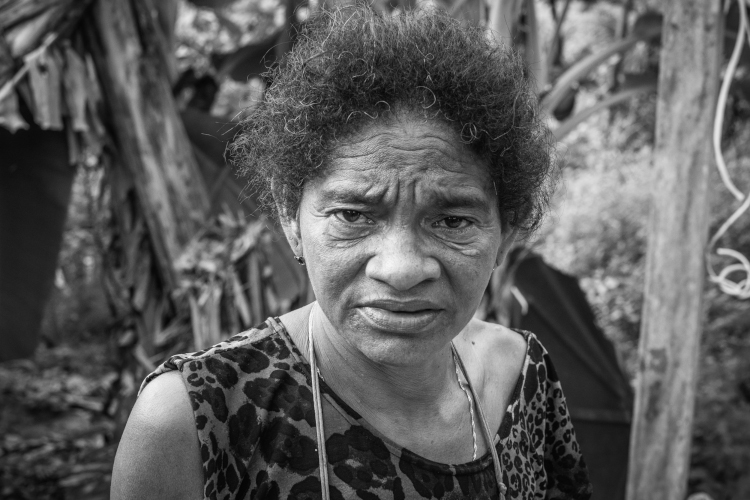
Fig. 1: Maria Socorro Costa Silva. [Source: https://amazonia.org.br/2020/07/eu-nao-quero-ser-assassinada-diz-socorro-do-burajuba-sobre-as-ameacas-que-enfrenta-em-barcarena/]
2. The litigants
Ridhima Pandey, 12 years old, is petitioning the Supreme Court of India on behalf of his country’s youth to order the federal government to enforce environmental laws passed by Parliament (Fig 2)[6].
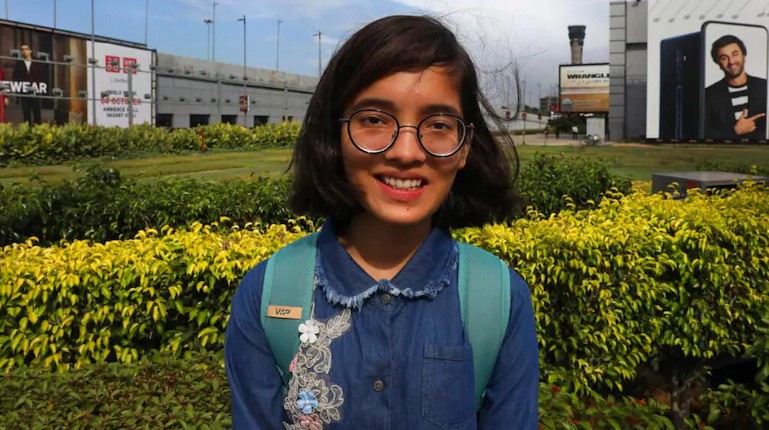
Figure 2: Ridhima Pandey. [Source: India Today, © AP / https://www.indiatoday.in/education-today/gk-current-affairs/story/ridhima-pandey-indian-climate-activist-greta-thunberg-1603977-2019-09-27]
In the United States, 21 young citizens filed a lawsuit in 2015 against the federal government’s inaction in the face of climate change risks that it had known about since 1960. The complaint was buried by the Supreme Court in January 2020[8]. In Colombia, 25 youth living in 17 cities have also spoken out against the State’s inability to stop deforestation that is harmful to the environment and the lives of a large part of the population [9].
Farmers, foresters, herders, hoteliers from Portugal, France, Italy, Germany, Romania, Kenya and Fiji were joined in 2018 by an association representing Saami youth in Sweden to demonstrate to the European Parliament and the European Council the inadequacy of the European Union’s 2030 climate targets[10].
The Mataatua Maori Council, responsible for the eastern part of northern New Zealand, spoke out in May 2016 against the government’s failure to stop climate threats to Maori people [11].

Figure 3. Maoris in New Zealand. [Source: Lepetitjournal.com, https://lepetitjournal.com/auckland/dossier-nouvelle-zelande-est-elle-raciste-22-230230]
France is not to be outdone. By Christmas 2018, two million people had signed the petition called “L’Affaire du Siècle”. It was used to file an action against the French state with the Administrative Court of Paris, with the hope of an outcome comparable to what happened in the Netherlands [12]. All these examples illustrate an increasingly strong dynamic in which young people are in the front line. In a hundred or so countries, it is they who have drawn operational consequences from two questions formulated by a pioneer, Greta Thunberg (Figure 4):
- why would we go to school to prepare for a future that will not exist for us?
- why do adults ask us to study science, when most of them are deaf to what scientists have to say?
All we ask of adults is that their actions be consistent with the results of science. Tens of millions of young people have carried this message in ‘Fridays for the Future’, in countless school strikes and protest rallies on five continents.

Figure 4: Greta Thunberg. [Source: Causa Mundi / https://www.causamundi.com/2019/03/31/greta-thunberg-symbole-du-conflit-generationnel-cree-par-la-crise-climatique/]
3. Students on the front line
All the above examples illustrate an increasingly strong dynamic in which young people are on the front line. In a hundred or so countries, it is they who have drawn operational consequences from two questions formulated by a pioneer, Greta Thunberg (Fig. 4):
- why would we go to school to prepare for a future that will not exist for us?
- why do adults ask us to study science, when most of them are deaf to what scientists have to say?
All we ask of adults is that their actions be consistent with the results of science. Tens of millions of young people have carried this message in ‘Fridays for the Future’, in countless school strikes and protest rallies on five continents.
One of the most significant moments of this awareness is Greta Thunberg’s August 2018 launch of the Fridays For Future (FFF) movement. Through its ingenuity and simplicity, the movement has quickly spread to all continents and has drawn in many climate organizations [13]. The fact that it has taken root in Africa is proof of this. In Uganda, the FFF started with a discussion between students on climate change. Under the impetus of Hilda Flavia Nakabuye and a few others, the movement brought together 20,000 students as early as February 2019 and has since initiated numerous demonstrations. In Nigeria, the FFF was born out of climate advocacy strikes in Abuja, Lagos and Kaduna, before consolidating into large demonstrations involving 100,000 students across the country, fighting for compliance with the Paris Agreement and environmental education [14].
Again in New Zealand, the School Strike 4 Climate NZ (SS4CNZ) movement is a creation of students, aged 8 to 22, from all over the country, who believe that pursuing climate justice is, and should be, possible. In coordination with the FFF and School Strike Climate (SS4A) International, they are urging their leaders to make the decisions necessary to protect future generations [15].
Of all the student-led movements, the oldest is probably “350.org”, founded in 2008 by seven students and one faculty, William “Bill” McKibben, from Middlebury College, a small rural college in New England, USA. With no experience and no resources, they set out to find people on every continent who were aware of the risks of war, world hunger, women’s rights and public health issues. In October 2009, on the first day of climate action, 5,200 demonstrations were held in 181 countries. Many of their leaders have gone on to become leaders of the Pacific Climate Warriors in action in Pacific islands such as Tuvalu, Vanuatu, the Marshall Islands, Micronesia and the Solomon Islands. Others in the United States have taken the lead in opposing the Alberta-Gulf of Mexico pipeline project.
In a different context, that of the major scientific and technological universities, a growing number of students have a vision of science and its applications in harmony with that of the Friday strikers. They are drawing radical conclusions about their future professional careers, refusing jobs, however attractive, if they are not clearly part of a transition to a more sustainable society and economy. In France, the Ecole Polytechnique has not escaped environmental awareness. Many of its students are now questioning the orientations of large companies such as Airbus or Total, in accordance with the principles of the “Manifesto for an ecological awakening”.
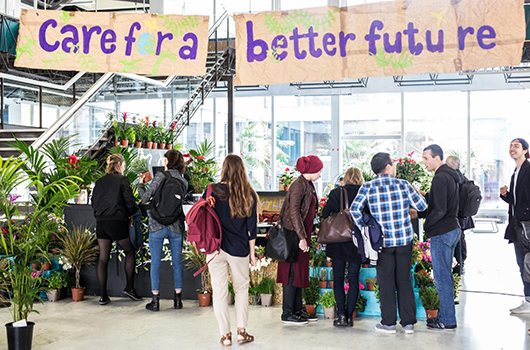
Figure 5. École Polytechnique students mobilize. [Source: © École Polytechnique, Institut Polytechnique de Paris website / https://www.polytechnique.edu/fr/ecologie-les-etudiants-de-lx-se-mobilisent]
Ecological concern is now spreading to a large part of the youth. In January 2020, a survey conducted in 20 countries among 9,000 students aged 16 to 25 revealed that more than 80% of them thought their generation was responsible for the future of the planet. How can this expectation be met? At the initiative of the Columbia University Mailman School of Public Health, 115 health schools have decided to introduce the issue of climate change into their curricula. Despite resistance, other similar initiatives have been launched in the UK, France and elsewhere [18].
4. Entrepreneurs
They are pioneering processes of energy production, storage and consumption that do not destroy living beings or the climate, as well as innovating materials that save natural resources. Some practice forms of agriculture that do not devastate biodiversity or cause irreparable pollution of water and soil. Others are implementing sustainable forestry practices, especially in the tropics. Large-scale actions are being taken to renovate and redesign cities in order to make them more resilient and welcoming. Some of these actors deserve to be highlighted:
- Danish Oil and Natural Gas (DONG), which built the first offshore wind farm in southern Denmark in 1991 [19]; now, under the new name Oersted, they are world leader in offshore electricity production.
- The electrical engineer Gyanesh Pandey and his three companions who, in 2007, designed the first of 80 thermoelectric power plants in the state of Bihar, powered by rice husks [20];
- Heat pump manufacturers, who have kept innovating since 1990 and are preparing the new generation of hybrid pumps or high-temperature pumps for residential and professional applications (Fig. 6) [21];
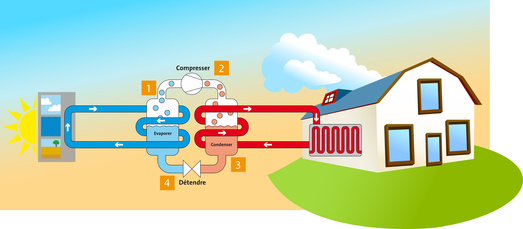
Figure 6. Heat pump for residential applications. [Source: © Une-pompe-a-chaleur.fr / https://une-pompe-a-chaleur.fr/]
- Research centres, both academic and industrial, are developing new generations of electrodes and electrolytes to improve the performances of supercapacitors, which will make electric vehicles much more attractive [22];
- Dutch engineer Hans van Mameren, a Singapore-based consultant, who in 2017 proposed to electrify one million diesel-powered boats in Southeast Asia from a prototype launched in 2020;[23]
- Elon Musk, who in 2003 developed a battery powered electric vehicle that led to the success of Tesla ;[24]
- Non-commercial organisations such as the “Centro de Desarrollo de Energía Solar” in Cochabamba, Bolivia, or the “Farmers With A Vision” in Busia County, Kenya, which distribute solar cookers in rural areas [25];
- The Swiss company Climeworks, which, after having built and operated 14 units for the direct capture of CO2 from the air, is experimenting with CO2 storage units (CarbFix) in Iceland and Italy [26];
- Amat Samsuri, a resident of a coastal village in the Probolinggo district of East Java, who mobilised his fellow citizens in defence of mangroves with the support of “Mangroves for the Future”, an ONG that is now behind more than 400 projects in South and South-East Asia [27];

Figure 7. The role of mangroves in protecting the environment. [Source: © Living in Thailand / https://vivre-en-thailande.com/le-role-des-mangroves-en-thailande/9176/]
- Novamont, which, in the wake of Giulo Natta’s discoveries (Nobel Prize 1963), has become the world leader in biodegradable plastics with the Mater-Bi product line and has paved the way for other innovators such as Carbios and the Toulouse Biotechnology Institute [28] ;
- Engineers and agronomes Simcha Blass and Daniel Hillel who, in the 1950s and 1960s, developed drip irrigation, also called micro-irrigation, enabling the cultivation of semi-desertic areas such as the Negev in Israel while saving a resource as scarce as water [29];
- Farmers on all continents who are innovating to eliminate the use of pesticides or to create short circuits between producers and consumers, such as those of “Slow Food” or “Terra Madre”[30];
- the “Livelihoods” programme of the Danone company, which, following on from Rachel Carson’s “Silent Springs” in 1962, is trying to store carbon and protect the biodiversity threatened by the agri-food industry[31];
- Ethan Brown, a committed vegan and climate advocate, who founded “Beyond Meat” in the service of food from plants, not animals, with success in many countries, including China [32] ;
- Surui Indians who, since the recovery of their lands in the Brazilian Amazon, have demonstrated their ability to exploit the forest in a sustainable way, much to the dismay of the current president Jair Bolsonaro [33];
- Domenico (Mimmo) Lucano, mayor of Riace, a village on the southeast coast of Calabria, who made possible the integration of 450 migrants from various Mediterranean and African countries [34] so as to recreate a positive dynamic in the village;
- Jean-François Caron who, as a mayor from 2010, converted the former mining town of Loos-en-Gohelle, in the Nord-Pas-de-Calais region of France, into an entrepreneurial community using renewable energy and the internet, with the support of Jeremy Rifkin (Fig. 8) [35].
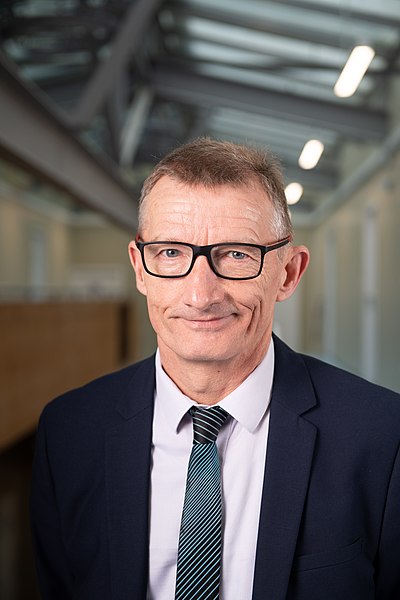
Figure 8. Jean-François Caron, mayor of Loos-en-Gohelle. [Source: Antoine Raynaud, CC BY-SA 4.0 <https://creativecommons.org/licenses/by-sa/4.0>, via Wikimedia Commons]
In light of all these examples, the importance of the role of political and social entrepreneurs, at the local or regional level, in leading the communities for which they are responsible towards a more sustainable future cannot be overstressed.
5. Investors
Increasingly aware of climate and environmental risks, a growing number of institutional and individual investors are reorganizing their portfolios by divesting from stocks with a high carbon footprint (companies whose activities are centered on coal, oil, and widely used construction materials), and by acquiring stocks of companies associated with the transition to a decarbonized economy (renewable energy operators, producers of particularly efficient materials) [36]. Pioneers such as the Wallace Global Fund and the Rockefeller Brothers Fund started this “divest-invest” trend in 2014; it has then grown dramatically (Fig. 9) [37].

Figure 9. The Rockefeller Brothers Fund. [Source: © Voltatic / https://www.voltatic.com/2016/08/energies-vertes-rockefeller-brothers-fund-investit-afrique/]
Green bonds and other credit instruments for financing activities in line with the ecological and economic transition are being issued and traded in an increasing variety of forms. Their growth is particularly strong in China and the European Union, where their development is encouraged by the implementation of appropriate public policies and regulations.
Is this enough? No, say those who are calling for more vigorous intervention by public authorities, with the support of the European Central Bank (ECB)[39].
6. Communicators
Efficient communicators are essential to clarify, disseminate and amplify messages derived from scientific knowledge, especially since these messages are not easy to share and the time available is limited. Richard Feynman was not only an extraordinary pedagogue at the service of his physics students, he also had an exceptional gift for guiding and seducing non-specialists in scientific and technical fields that were a priori impenetrable. He showed a way to scientists who today are confronted with scepticism, apathy and even despair about the state of the planet. Several of these scientists have in turn shown that they are up to the task, and testify to this here [40].
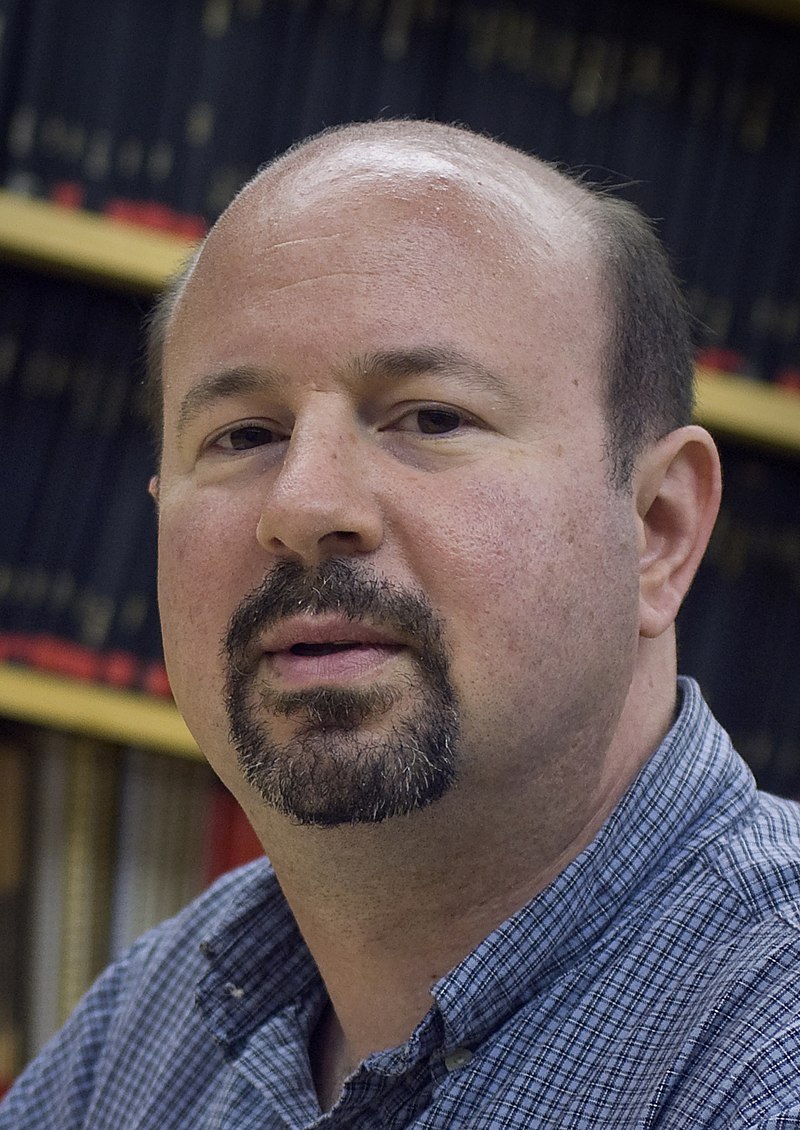
Figure 10. Michael Mann, Penn State University professor, climate scientist, educator and warrior. [Source: Greg Grieco, CC BY 3.0 <https://creativecommons.org/licenses/by/3.0>, via Wikimedia Commons]
Conclusion
These stories have much to galvanize. However, do they have sufficient development potential, can they be expected to generate a profound transformation of society and the economy, despite formidable obstacles? In the Old Regime and the Revolution (Book 3), Alexis de Tocqueville shows how, in the second half of the 18th century, a profusion of new visions and actions led to the overthrow of a thousand-year-old Old Regime and to the creation of a new order, which innumerable obstacles seemed to make impossible (Fig. 11). Today, a similar proliferation can be observed with the prospect – albeit fragile and under severe time constraints – of a more universal revolution than that of 1789.
Notes and references
[1] Henry Claude, Rockström Johan, Stern Nicholas (2020). Standing up for a Sustainable World. Voices of change. Edward Elgar Publishing Limited, 450 pp.
[2] To protect the Amazon, defend the people of the forest.
[3] Of chainsaws and grace: direct action by eco-vigilantes in the Philippines.
[4] Social justice goes hand in hand with environmental campaigns and not just in Africa.
[5] Living our values : using art and technology to campaign in Turkey.
[6] How policymakers imperil coming generation’s future and what to do about it.
[7] The Urgenda case in the Netherlands: creating a revolution through the courts.
[8] Juliana v. United States and the global youth-led legal campaign for a safe climate
[9] Protective the rights of future generation through climate litigation against deforestation in the Colombian Amazon.
[10] People’s climate case-families and youths take the EU to court over its failure to address the climate crisis.
[11] Climate change claim on behalf of New Zealand’s indigenous Maori peoples.
[12] France : L’Affaire du Siècle, the story of a mass mobilization for climate.
[13] Fridays For Future-FFF Europ and beyond.
[14] The Fridays For Future movement in Uganda and Nigeria.
[15] The origins of School Strike 4 Climate NZ.
[16] 350.àrg William “Bill” McKibber.
[17] How to become an ingeneer in the ecological crisis?
[18] Ecological aspirations of youth: how higher education could fall between two schools?
[19] Catching mighty North Sea winds.
[20] Providing electricity from rice husk in rural India.
[21] Heat pumps for decarbonizing buildings.
[22] The rise of supercapacitors: making electric vehicles as convenient as ordinary ones.
[23] From scooter to boat: innovations in electric transport in cities of Southeast Asia.
[24] The third attempt at the electric car might be the successful one.
[25] Solar cookstoves for adaptation to degrading natural conditions.
[26] Carbon capture from ambient air: a brake on climate change?
[27] Ecological engineering in coastal protection.
[28] Better to corrupt plastics than the environment.
[29] Drip irrigation: Daniel’s legacy.
[30] Making the case for agroecological innovations: the need for technical but also political entrepreneurs.
[31] Radical transformation in global supply chains: can new business models be based on biodiversity in the agrifood industry?
[32] Ethan Brown – the protein revolutionary.
[33] How to make a sustainable living in a tropical forest: the case of Suruí Indians in the Amazon rainforest – success under threat.
[34] Migrants to repopulate depopulated villages – Riace in Calabria, Italy and its mayor Mimmo Lucano.
[35] How Loos-en-Gohelle, a derelict mining town in the north of France, has become a standard in sustainable development.
[36] Unleashing the power of financial markets for the green transition.
[37] The case for fossil fuel divestment
[38] China’s pionneering green finance.
[39] How can finance be used to combat climate change?
[40] There are about ten papers:
- Communicating climate change science to diverse audiences.
- Global marine fisheries: avoiding further collapses.
- Why are we so much more afraid of COVID-19 than of climate change? Early lessons from a health crisis for the communication of climate
- Communicating the climate emergency: imagination, emotion, action.
- Climate change: from research to communication.
- Communicating biodiversity loss and its link to economics.
- Helping trusted messengers find their voice on climate change.
- From climate scientist to climate communicator: a process of
- Communicating science beyond the ivory tower


